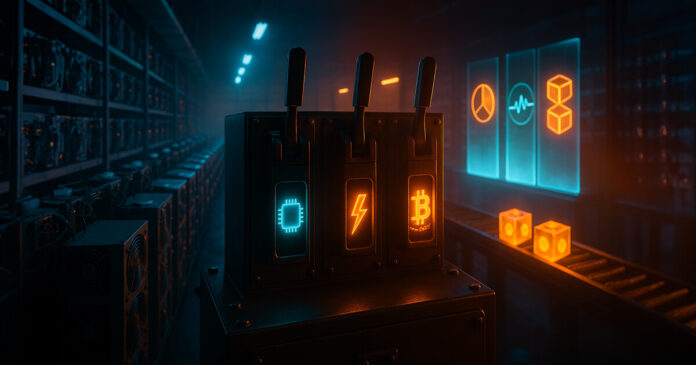Introduction to Bitcoin Mining Challenges
As the focus of this cycle has been on corporate Bitcoin treasuries, ETF inflows, and shifting global liquidity, Bitcoin miners have become the overlooked backbone of the network. The current state of Bitcoin mining is facing significant challenges, with block rewards shrinking and energy costs rising. Many miners are forced to reinvent themselves and move into AI hosting, energy arbitrage, and infrastructure services just to keep their assets running and the chain secure.
Bitcoin Mining Revenue and Network Security
Bitcoin only pays 3,125 BTC per block from the subsidy, so transaction fees are now the main driver of miner revenue and network security. The seven-day hash rate is around 1.12 zettahashes per second, and the network difficulty is around 155 trillion. Over the last 144 blocks, miners earned a total of about 453 BTC in rewards, which is about $45 million at a spot price of about $101,000.
According to mempool.space’s mining dashboard, the average fees per block were about 0.021 BTC, a small portion of miners’ income. Hashprice derivatives indicate a short-term constrained revenue environment. The Luxor forward curve implies around $43.34 per petahash per day in October, compared to $47.25 at the end of September.
Fees and Miner Revenue
Fee demand remains choppy. After the April 2024 halving surge associated with the launch of Runes, where ViaBTC’s halving block earned more than 40 BTC from subsidies and fees combined, base fees fell over the summer. Galaxy Research wrote in August that on-chain fees had fallen to near all-time lows despite price strength, describing the fee market as anything but robust.
The pool policy reinforces this picture. Foundry and others have at times conducted mining transactions at less than one sat per virtual byte, showing that the practical fee floor can collapse during quiet mempool periods. Cheap confirmations improve the user experience in quiet windows, although the security budget that miners then collect relies even more heavily on the fixed subsidy.
Security Framework and Attack Cost
A simple way to frame the next quarter is to treat fees in three regimes and assign them to miner revenue, hash price, and attack cost bar. At 144 blocks per day, a subsidy of 3,125 BTC, a network hashrate of approximately 1.13×10 TH/s, and a spot price of approximately $113,000, fees per block of 0.02 BTC, 0.50 BTC, and 5.00 BTC correspond to fee shares of approximately 0.6 percent, 13.8 percent, and 61.5 percent of the Miner revenue.
The daily security budget, defined as subsidy plus fees across 144 blocks, ranges from around 453 BTC in the quiet case, to 522 BTC on a moderate day, to 1,170 BTC during peak activity. The incremental effect on the hash price is mechanical. Additional fees per block increase daily revenue by ΔF × 144 BTC, which, when spread across the network hashrate and converted locally, increases miner revenue by approximately $0.29, $7.2, and $72 per petahash per day in these scenarios.
Energy Costs and Miner Survival
Energy costs provide a link between these increases. A current generation fleet powered by Bitmain’s Antminer S21 at about 17.5 joules per terahash and MicroBT’s M66S family at about 18 to 18.5 joules per terahash will have to make do with electricity costs of about $21 to $30 per petahash per day at 5 to 7 cents per kilowatt hour, depending on provider specifications and usual electricity prices in the USA.
At forwards of around $43 per petahash per day, the gross power margin can be low without taking into account operating and capital costs. A day of moderate fees improves the survival of marginal fleets, and repeated spikes can offset periods of low fees by increasing cash generation.
Protocol Policy and Wallet Behavior
There is noticeable progress on this front. Bitcoin Core v28 introduced parent-child packet forwarding, allowing nodes to forward low-cost parent transactions when paired with a paying child node via the “child pays for parent” mechanism, even if the parent falls below the minimum forwarding fee threshold.
This reduces the risk of stuck transactions and allows miners to monetize block space that would otherwise be unused. The v3 and TRUC policy set adds a robust fee-replacement feature for capped transaction topologies, reducing pinning and enabling predictable fee increases, which is critical to Lightning Channel operations and exchange batch processing.
Read more about the challenges facing Bitcoin miners and the potential solutions at https://cryptoslate.com/bitcoin-is-getting-too-expensive-to-mine-profitably-what-breaks-first-hashrate-ux-or-ideology/

